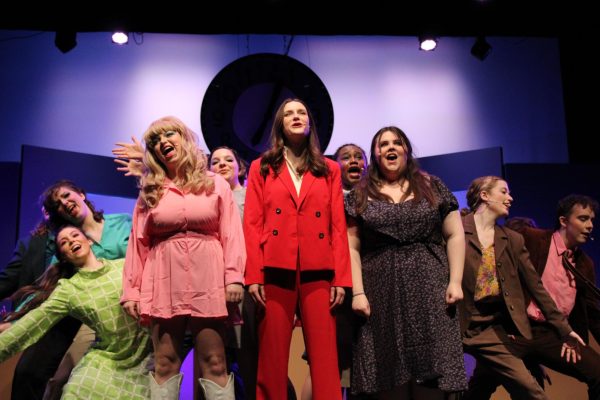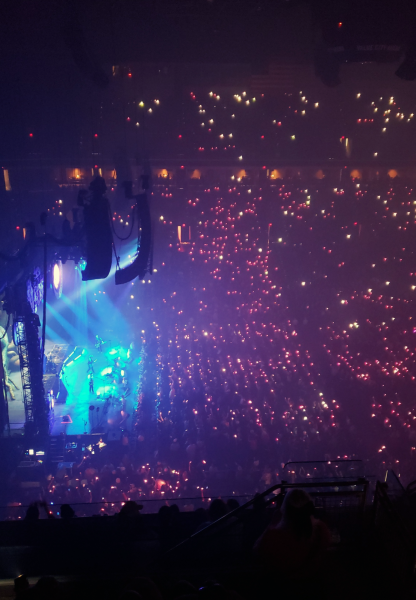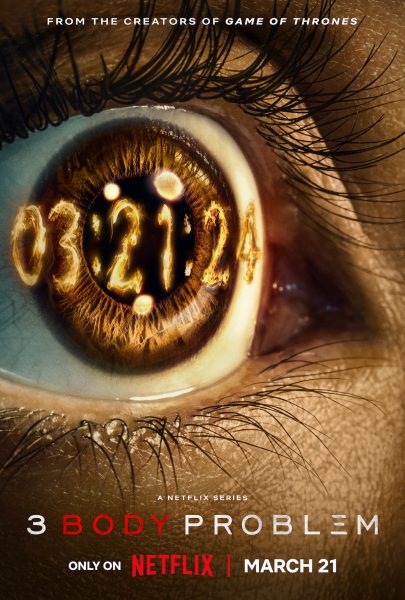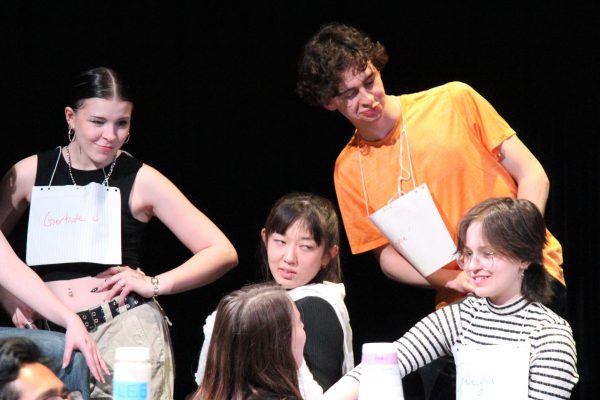“The Girl on the Train” a captivating mystery/thriller
October 14, 2016
In Jan. 2015, the book “The Girl on the Train” was released and immediately captured readers’ attentions. Within less than a year, the book was an automatic success and was optioned for a film adaptation. Intrigued by the hype, I read the book as a part of our campus’s ABC Book Club and was entertained, though not particularly blown away or impressed. To me, the book was just another psychological mystery in the slew of what is offered.
When the movie was finally released this past weekend, I was shocked by the ratings from Rotten Tomatoes. The movie only received a 44 percent from critics and 56 percent from the audience. According to the critic consensus, “Emily Blunt’s outstanding performance isn’t enough to keep ‘The Girl on the Train’ from sliding sluggishly into exploitative melodrama.” How had such a successful book received such poor movie ratings? Had the critics actually read the book, or were they simply meriting the storyline as if it were a fresh, original screenplay? I originally had no intention of watching the movie, but decided I needed to see why this literary success was doing so poorly in the box office.
As far as a book to movie adaptation, it is somewhat faithful. There was quite a bit left out from the book, and that’s understandable, as everything cannot fit into a film adaptation and everything isn’t necessary for the plot. I was surprised by a major change in scenery in the story though. In the book, the novel was set in London, however the movie is set in New York City and its surrounding area. I suppose this change was meant to allow for the use of American actors and for Americans to identify more with the plot, but it did not make sense for the story, especially since the writers kept Emily Blunt’s character, Rachel Watson, from London. While New York City and London are both major cities, they have different styles of living. While Emily Blunt’s character was able to sustain her alcoholic, unemployed lifestyle in London because of her mother’s support, there was no way she could survive in New York from alimony alone.
As far as the characters go, they were all incredibly twisted characters, but I feel like Emily Blunt did the best job portraying her character, Rachel Watson. Watson is an obsessive, unemployed alcoholic with nothing better to do in her life than stalk her ex-husband and drink all day, all while pretending she still has a job. Her memory is unreliable and this leads to sticky situations. Blunt did a great job embodying this character and really made the audiences believe she was this manic woman. However as much as I liked Blunt, she wasn’t the right woman for the role: Rachel Watson is supposed to be overweight, but Blunt clearly isn’t. There is so much emphasis placed on Watson’s weight in the book, and that is never seen in the movie, something that makes the plot and characters’ motivations more disjointed.
As far as the other actors and actresses go, while they did a good job showing off their characters’ flaws, they did not feel as authentic as Blunt. This brings me back to the change in setting. I think it would have been perfectly fine to set the movie in London and have English actors and actresses. Although they were necessary as a whole, the supporting characters need not have been American when Watson was from England, along with many of the actors. For instance, Luke Evans is from the United Kingdom, yet they made his character American. Honestly, his acting skills felt wasted portraying this American husband.
Watching this movie, I couldn’t understand why the movie critics were so harsh. There was never a dull moment or a point where I just wished they would move on with the plot. Every part of the plot had a purpose that built up to the end. Yes, there were some slow points but they were still intriguing. I will admit, however, there was a lot of side plots involving minor characters that were not even remotely necessary and should have been taken out. Since I had read the book, I knew everything that was going to happen, or rather, everything that should be happening if the movie had stayed faithful to the book. I watched the movie with a friend, and I could tell she had no idea what was going on, but in a good way. Everyone in the theater was like that. When the big reveal happened and the plot reached its peak, everyone in the theater was shocked, and some of them couldn’t stop chatting among each other because they were just so invested in what was happening.
My main complaint with the movie was the cinematography. There were a lot of scenes where the filming and editing was just weird and very trippy, but not in a way that added anything to the film. The flow from one scene to the next sometimes felt too jumpy and whenever there was a close-up of Blunt’s face with the poor lighting, I couldn’t help but cringe.
As a book-to-movie adaptation and simply as a film, I thought “The Girl on the Train” was a good movie. After watching it, I don’t understand why critics were so harsh in their ratings. I agree that the movie wasn’t phenomenal, but it was still engaging and a good use of two hours.
Movie: The Girl on the Train
Director: Tate Taylor
Release Date: Oct. 7
Rating: 3.5/5 Stars


















